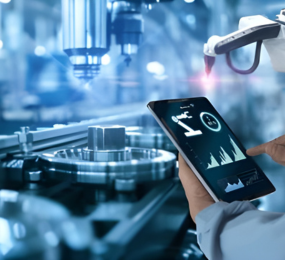Driving with Confidence: The Vital Role of Functional Safety in Automotive Innovation
As vehicles become more intelligent and autonomous, the stakes for safety are higher than ever. Behind every high-tech dashboard, every self-parking feature, and every lane-keeping alert lies a critical foundation: Automotive Functional Safety
Functional safety isn't just a checklist or a buzzword. It's a rigorous engineering discipline aimed at ensuring that electronic systems and software in vehicles perform safely—even when something goes wrong.
In an industry that's racing ahead with innovations like EVs, ADAS (Advanced Driver-Assistance Systems), and autonomous driving, functional safety is what keeps progress aligned with public trust and regulatory expectations.
What Is Functional Safety, Really?
At its core, functional safety means designing systems that can detect faults, manage risks, and fail in a safe way if something goes wrong. It’s not about avoiding failure entirely—because that’s often impossible—but about planning for it intelligently.
Think of it like this: If a vehicle’s automatic braking system encounters a sensor error while driving at highway speed, functional safety ensures that the car doesn't suddenly brake or steer erratically. Instead, the system would deactivate safely and alert the driver, avoiding dangerous outcomes.
This approach is governed by international standards such as ISO 26262, which provides a framework for identifying hazards, assessing risk levels (ASILs), and designing safety measures throughout a vehicle’s lifecycle—from concept to production and beyond.
Why It Matters More Today
Modern vehicles are increasingly controlled by software and electronics—some boasting over 100 million lines of code. As complexity grows, so does the potential for failure. What was once mechanical is now digital, and the margin for error has narrowed dramatically.
Autonomous and electric vehicles, for instance, rely on interconnected control units, real-time data processing, and fail-proof response mechanisms. If one part fails, others must compensate instantly to prevent disaster.
Functional safety ensures that these interwoven systems can be trusted—even in unpredictable conditions.
Industry-Wide Responsibility
Automakers, suppliers, software developers, and regulators all share responsibility. Functional safety is not a post-production test—it must be embedded from the earliest design phase.
That’s why cross-functional collaboration and continued investment in training, tools, and rigorous validation processes are key to future-proofing vehicles and saving lives.
Takeaway Point
Functional safety is not just about technology—it’s about people. Every system that safely handles a malfunction or protects a driver in a moment of crisis is a testament to thoughtful engineering and responsible innovation. As vehicles evolve, functional safety ensures they do so with reliability and integrity.
Learn more on our website: https://www.leadventgrp.com/event/3rd-annual-automotive-functional-safety-forum/register
For more information and group participation, contact us: [email protected] .
Leadvent Group - Industry Leading Events for Business Leaders!
www.leadventgrp.com | [email protected]












